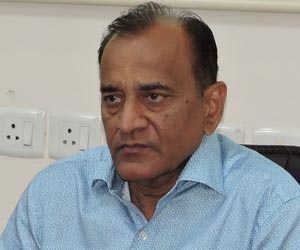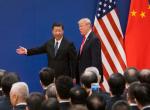The Delhi High Court’s verdict of 4 August is not important because it has settled the political fight between the Aam Aadmi Party’s (AAP) Government and the Union Government (via the Lieutenant Governor). It hasn’t. That slugfest will continue. A vindicated Najeeb Jung, the Lieutenant Government of Delhi, addressed a Press conference hours after the judgement and gleefully read out portions of the ruling which demolished the AAP’s claim to dominance in administering Delhi’s affairs. He said it was about “constitutional validity”. On their part, AAP leaders have attempted to give a new twist, saying that the people of Delhi desire to be ruled by a regime they elected and not by a representative of the Union Government. In a bizarre analogy, they wondered how proper it would be for the people of India to be governed not by the elected Modi dispensation but by the President of India.
Of course, it was never the intention of the High Court to arbitrate in a political tussle. Its judgement was based entirely on the constitutional scheme of things, as it saw it, in the administration of Delhi. In doing so, it concluded that Lieutenant Governor has the last word in administration; that he is not bound by the aid and advice offered by the Council of Ministers of Delhi; and that no decision of the said Government which has not been endorsed by the Lieutenant Governor, who is the administrator, is legally tenable.
The issue before the High Court was about the powers of the Lieutenant Governor vis-à-vis the powers of the elected Government of Delhi. Interestingly, the AAP regime, which is now running for legal cover—it now looks to the Supreme Court for relief—had taken the lead to approach the High Court, claiming that the Lieutenant Governor was hampering its functioning through unconstitutional methods.
Once the arguments from both sides were done with and the court reserved its verdict, the AAP regime had suddenly discovered that the High Court was not equipped to judge an issue of a ‘federal’ nature. It said that only the apex court had the powers to deal with matters relating to powers of the States and the Union Government. Its lawyer and senior advocate Indira Jaising pleaded that “no judgements be allowed to be delivered without decision on the jurisdiction of Delhi High Court with regard to the dispute in question”.
This was clearly an afterthought, because the idea never occurred to the AAP Government when it approached the court on the matter. It was only when the High Court reserved its judgement that the regime went to the apex court, seeking restraint on the High Court from delivering its ruling. It can be speculated that AAP’s legal team had intuitively realised that its client was on a weak wicket. The apex court proceeded to dismiss the plea, maintaining that it would be improper to restrain the High Court from giving a verdict it had reserved.
Politics apart, the High Court ruling (delivered by a Division Bench comprising the Chief Justice) on as many as nine petitions, revolved around Articles 239, 239A and 239AA of the Constitution of India. Both sides relied on different interpretations. Through the ruling, the court has established a precedent on not just the powers of an elected Government, but more importantly, the powers that vest with an elected regime in Delhi and its Lieutenant Governor. This is crucial because Delhi is unique. It’s a semi-State of sorts but yet a Union territory that comprises the national capital, New Delhi. Its governance, therefore, cannot be — and has not been — along the lines the Constitution has mandated for other Union Territories and States. While the last word on the dispute in question has to be said by the Supreme Court, for now at least, certain aspects are clear as daylight.
The first is the location of Articles 239, 239A and 239AA, which both parties have relied upon. This is important because it sets the tone for much of what is to follow, as it had set the direction for all that has happened so far. The three provisions are placed in Part VIII of the Constitution dealing with Union Territories. In other words, there is no disputing that Delhi is a Union Territory. This is all the more evident from the official nomenclature, which is, ‘National Capital Territory of Delhi’. The Government of Arvind Kejriwal is the Government of NCT of Delhi, and the Lieutenant Governor is the administrator of the NCT of Delhi.
The second aspect is about the status of the Lieutenant Governor of a Union Territory. Clause 1 of Article 239 defines the status of administrator as follows: “The administrator of a Union Territory…is not bound to act on the advice of his Council of Ministers, even in matters where he is not required to act in his discretion by or under the Constitution.” This rips apart the AAP Government’s contention that the Lieutenant Governor was wrongly charting a path different from that the Constitution had laid. The administrator of a Union Territory cannot be likened to that of a Governor of a State who has relatively limited powers.
The third is to do with the position of the administrator (the Lieutenant Governor) with regard to his Council of Ministers. Clause 1(a) of Article 239A is abundantly clear. We know that the administrator has discretionary powers. But even in instances where such discretionary power does not exist, the clause in question says, inter alia, “…he can act without the advice of Ministers”. This has been well settled in the Devji Vallabhbhai Tandel versus Administrator case of 1982. Here, three petitioners had argued before the Supreme Court that their detention by orders of the administrator of Goa, Daman and Diu, under the Conservation of foreign Exchange and Prevention of Smuggling Activities Act of 1974, was illegal since the administrator had not acted on the aid and advice of his Council of Ministers. Their petitions were dismissed.
Further, if there is a conflict between the Lieutenant Governor and the elected regime over issues on which the administrator has no discretionary power, the administrator can take the matter to the President for resolution. And even here, if there is urgency for the Lieutenant Governor to decide on an issue pending with the President for a solution, he can act without the advice of the Council of Ministers. Thus, repeatedly, the Constitution makes it clear that the Lieutenant Governor’s position is supreme.
On all of these issues, the AAP Government found itself on the back foot. However, what has added meat to the legal battle is the invocation of Article 239AA. It is this provision which turned the Union Territory of Delhi into NCT of Delhi. The Article had been inserted in the Constitution through the Constitution (Sixty-ninth Amendment) Act, 1991, and came into effect the following year in February. The administrator, who would be appointed under Article 239, came to be known as the Lieutenant Governor. The fact that this Delhi-specific provision was inserted in the broad category of Article 239 underlines both the fact that Delhi is effectively a Union Territory and that the Lieutenant Governor has powers not enjoyed by Governors of States. Those powers, mentioned in earlier forms of Article 239, were re-emphasised in Article 239AA. While Clause 4 says that the Lieutenant Governor needs to function with the aid and advice of the Council of Ministers, it also provides him the option to skip the ‘aid and advise’ while exercising his discretionary powers.
Thus, the Constitution is clear that the Lieutenant Governor is the administrative head of the NCT of Delhi. It will thus be interesting to see how the Supreme Court deals with the matter. Meanwhile, there is yet another legal aspect at play: That of the Transaction of Business Rules, 1993, that, among other things, lays down guidelines for the appointments of Chief Secretary, Commissioner of Police, Secretary (Law) and Secretary (Land) to the NCT of Delhi. These rules were framed by the Delhi Legislative Assembly. This document lays down that the “Lieutenant Governor shall in respect of matters connected with ‘public order’, ‘police’ and ‘land’, exercise his executive functions to the extent delegated to him by the President in consultation with the Chief Minister, if it is so provided under any order issued by the President under Article 239 of the Constitution”. Thus, there is consultation with the Chief Minister, but no primacy of the Chief Minister.
The Rules also state that the “Lieutenant Governor shall refer to the Central Government every legislative proposal, which, if introduced in a Bill form and enacted by the Legislative Assembly, is required to be reserved for the consideration of the President…” And finally, the Rules say that ‘when a matter has been referred by the Lieutenant Governor to the Central Government… further action thereon shall not be taken except in accordance with the decision of the Central Government”.
These Rules, taken together with Articles 239, 239A and 239AA, provide the groundwork for the relationship between the Lieutenant Governor and the Government of the NCT of Delhi. They have also led to political friction, with the Kejriwal Government alleging that the Lieutenant Governor was out to sabotage its functioning by refusing to endorse its decisions and Lieutenant Governor Jung stating that the elected regime was deliberating seeking to bypass laws in administering Delhi. In a bid to redefine the relationship, the AAP Government also filed a suit in the Supreme Court, invoking Article 131, which provides jurisdiction to the apex court to settle disputes between the Union Government and the States or between States. This matter is still pending before the court.
It is interesting to note that such conflicts — even if one believes for a moment that they are seeded in the provisions of the Constitution — did not arise during the tenures of previous Governments in the NCT of Delhi. Often, there were opposing parties at the Centre and in Delhi simultaneously, and yet unsavoury episodes of the kind we have witnessed over the last two years, didn’t happen. Given this reality, there can be some basis in the argument that the Kejriwal Government has gone out of its way, for political reasons at best, to invite confrontation with the Union Government. This is probably the reason why its leaders, after the August 4 verdict of the Delhi High Court, termed their campaign as a “fight for democracy” and termed the court order as “a blow to democracy”.
This ‘fight for democracy’ call hasn’t impressed the court, if one goes by the recent judgement. The ruling, besides other things, also struck down the probe panels and inquiry commissions the Kejriwal regime had instituted to go into alleged scams, as invalid. This was again on the basis that the Lieutenant Governor had not been brought on board.
The larger political question is: Should Delhi be given a full-fledged statehood? It could, one may argue, once and for all end the conflict. But most experts who understand the functioning of the NCT of Delhi and its unique position of comprising the nation’s capital which houses Union Government and foreign establishments such as embassies and High Commissions and the Parliament, are wary of the idea — even if one imagines that there can be some workable distribution of responsibility between the elected Delhi Government and the Centre. Former Delhi Chief Secretary has been quoted in The Sunday Guardian as saying that the “Centre is responsible for providing security” to these establishments. He added that if Kejriwal were to become the country’s Prime Minister, he would find the idea of statehood for Delhi “worthless to pursue”.
Noted constitutional expert and former Secretary-General of the Lok Sabha, Subhash Kashyap, told the weekly paper that being the national capital, Delhi, “by definition” has to be “administered by the Union Government”. He added that to give the elected Government full control over land and security issues “is against national interest”. A similar sentiment has been expressed by well-known lawyer Harish Salve; he called the statehood demand a “bad idea”.
Nonetheless, a solution has to be found to end this endless confrontation. There are three ways this can happen. The first is that the relevant provisions of the Constitution are tweaked to offer greater space to an elected regime. But this is easier said than done. Few parties, regardless of their political affiliation, will want changes that will bring uncertainty in the administration of Delhi. An amendment to the Constitution will, as things stand, will not fetch the kind of majority support needed to see it through. The second way is to abide by the pronouncement of the Supreme Court, which is seized of the matter. In the present situation, this appears to be the best solution. The third is for the Union Government and the Delhi Government to sit across the table and find ways to reduce the friction through give and take that remains within the parameters of the Constitution. This is possible only if the verbal street-fight is brought to an end and attacks on personalities cease.
There is, of course, a fourth way out, mentioned earlier in this article: Confer statehood to Delhi. But here again, political parties must have a unanimous opinion, and Article 239AA will have to be shown the door. This is unlikely to happen at least in the near future.
(The writer is a senior political commentator and public affairs analyst)
Published Date: 9th August 2016, Image Source: http://www.livemint.com
(Disclaimer: The views and opinions expressed in this article are those of the author and do not necessarily reflect the official policy or position of the Vivekananda International Foundation)










Post new comment